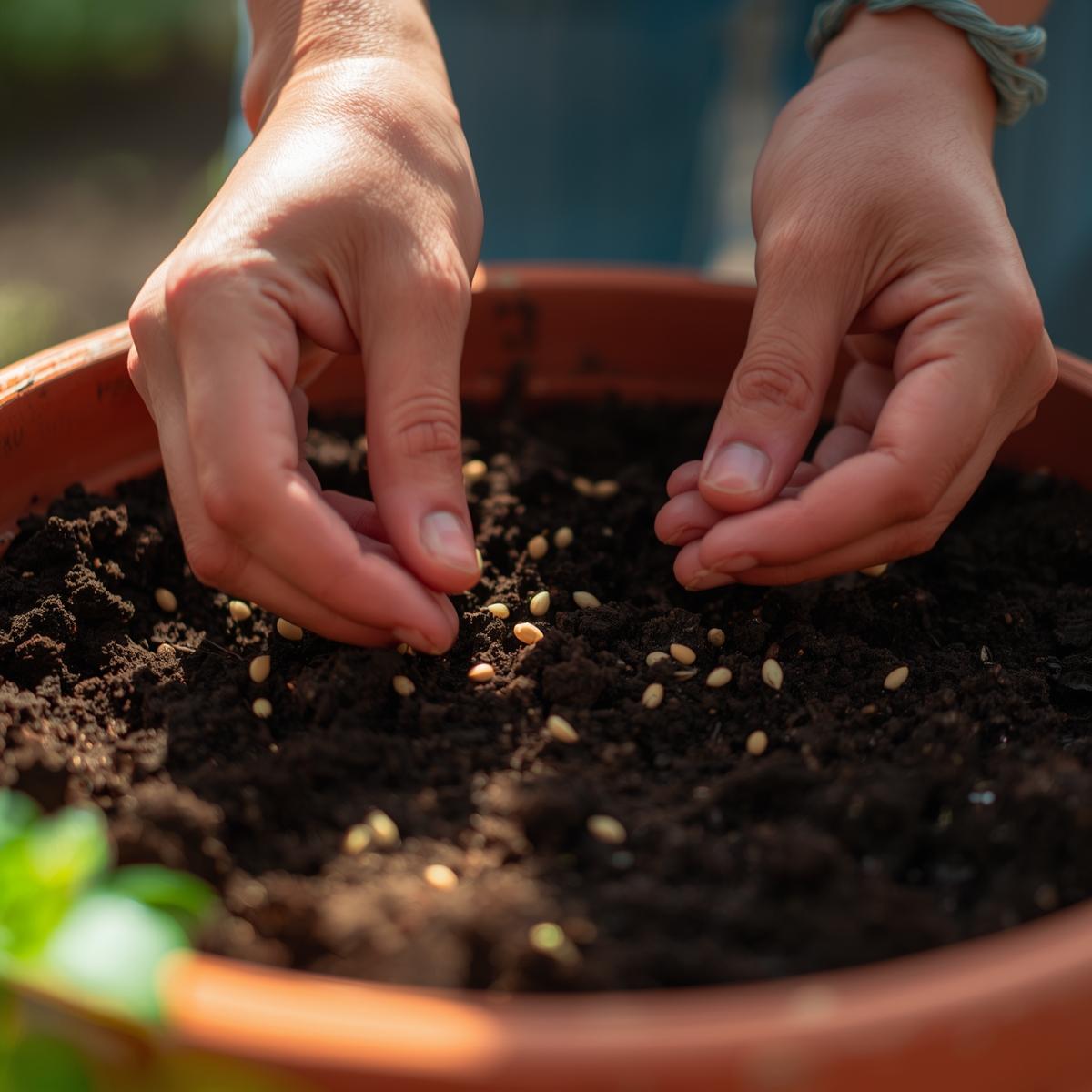Grow your dream garden from scratch — right on your windowsill!Ever wondered how to start your garden early, even before the weather warms up? Learning how to plant seeds indoors is the perfect way to get a head start on the growing season. Whether you live in the United States, United Kingdom, or Canada, indoor seed starting helps you grow stronger plants, save money, and enjoy the magic of watching life sprout from a tiny seed. 🌿In this complete guide, you’ll discover how to plant seeds indoors today — step by step — with simple tools, expert tips, and beginner-friendly advice that guarantees success.🌸 Why Start Seeds Indoors?Starting seeds indoors gives you control over your plants’ early growth, no matter the weather outside. Here’s why gardeners love this method:✅ Head Start: You’ll have mature plants ready to go when the outdoor soil warms.✅ More Variety: Access to unique flower and vegetable varieties not sold as seedlings.✅ Healthier Plants: Control over light, water, and soil means stronger starts.✅ Budget-Friendly: A few seed packets can yield dozens of plants!🌼 Fun fact: Many gardeners call this “indoor gardening magic” because watching seeds sprout never gets old.🌿 What You’ll Need to Plant Seeds IndoorsYou don’t need fancy equipment — just a few basics!🧺 Supplies Checklist:Seeds: Choose flowers, herbs, or vegetables suited to your climate.Seed trays or small pots: Recycled yogurt cups or egg cartons work too!Seed-starting mix: Lightweight and sterile soil blend (not regular garden soil).Water spray bottle: For gentle watering.Plastic wrap or a humidity dome: Helps retain moisture.Labels or markers: To keep track of your plants.Light source: A sunny window or LED grow lights.🌞 Tip: Use biodegradable pots if you plan to plant directly into the ground later — no transplant shock!🌱 Step-by-Step: How to Plant Seeds Indoors Today🥣 Step 1: Prepare Your ContainersFill each container or seed tray with moist seed-starting mix, leaving about half an inch of space at the top.Press the soil gently — it should be damp but not soggy.🌾 Step 2: Sow the SeedsCheck your seed packet for depth instructions (most seeds are planted about twice their size in depth).For tiny seeds (like basil or lettuce), just press them onto the surface.For larger seeds (like beans or marigolds), make a small hole and cover lightly with soil.Label each container immediately — seedlings can look surprisingly similar later!💧 Step 3: Water LightlyUse a spray bottle or fine mist to moisten the soil evenly.Avoid heavy watering — too much water can cause seeds to rot before they sprout.🌡️ Step 4: Create a Warm EnvironmentCover your trays with plastic wrap or a humidity dome to keep moisture in.Place them in a warm spot (around 65–75°F / 18–24°C). Most seeds love warmth for germination.💡 Pro Tip: The top of your refrigerator or a heating mat makes a perfect warm spot!☀️ Step 5: Provide LightOnce the first green shoots appear, remove the plastic cover and move the seedlings to a bright window or under grow lights.They’ll need 12–16 hours of light per day. Rotate the trays every few days to keep plants growing straight.🌿 Step 6: Thin the SeedlingsWhen seedlings develop their first set of true leaves (the second pair that grows), thin them out.Snip weaker seedlings at the soil line, leaving the strongest ones to thrive.✂️ Tip: Never pull seedlings out — it can disturb nearby roots.🌻 Step 7: Keep Soil Moist — Not WetWater when the top of the soil feels dry to the touch.Seedlings like consistent moisture but dislike soggy conditions.Use a bottom-watering method by placing trays in a shallow pan of water for a few minutes — this encourages strong root growth.🍃 Step 8: Harden Off Before TransplantingA week before moving your plants outdoors, help them adjust to real sunlight and wind.Each day, place the trays outside for a few hours, gradually increasing time and exposure.After 7–10 days, they’ll be strong enough to transplant into your garden beds or containers.🌼 Best Seeds to Start IndoorsHere are some easy and rewarding options for beginners:🌷 Flowers:MarigoldsZinniasPetuniasSnapdragonsSunflowers🥬 Vegetables:TomatoesPeppersLettuceBroccoliEggplant🌿 Herbs:BasilOreganoParsleyThyme🌸 Tip: Avoid root crops like carrots or radishes for indoor starting — they prefer to be sown directly outdoors.🌞 Troubleshooting Common Seed-Starting Problems🧊 Problem: No Germination✅ Solution: Check for warmth — most seeds won’t sprout below 60°F (15°C).💦 Problem: Mold on Soil✅ Solution: Too much moisture! Improve airflow and let the surface dry between waterings.🌱 Problem: Tall, Weak Seedlings✅ Solution: They need more light — move closer to a sunny window or use grow lights.🌿 Bonus: Eco-Friendly Gardening Tips♻️ Reuse yogurt cups or egg cartons as planters.🌾 Use compostable seed trays to reduce plastic waste.💧 Collect rainwater for gentle watering.🌱 Choose organic or heirloom seeds for more sustainable gardening.🌻 Conclusion: Discover How to Plant Seeds Indoors Today!And there you have it — your complete beginner-friendly guide to how to plant seeds indoors today! 🌸Starting seeds inside your home is more than just gardening — it’s a small act of creation. You get to witness growth from seed to bloom, all while nurturing a thriving indoor ecosystem.So grab your seed packets, fill those trays, and start your gardening journey now. With a bit of light, warmth, and care, your indoor seedlings will soon be ready to fill your garden with life, color, and joy! 🌷🌿🌞SEO Keywords: how to plant seeds indoors, start seeds indoors, indoor seed starting guide, beginner gardening tips, seed starting for flowers and vegetables, home gardening hacks, grow seeds inside, gardening for beginners.

